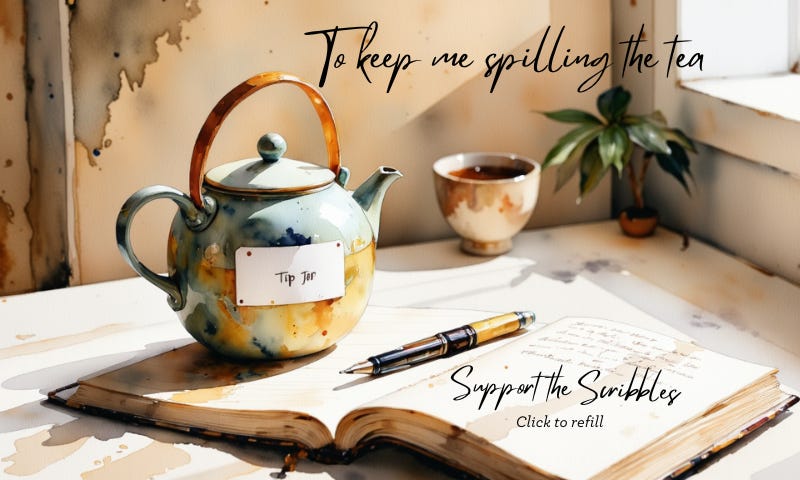Two sentences can become your readers’ north star
A copywriter's confusion is a crucial lesson for authors

I was recently chatting with my coach and copy mentor, Kevin Rogers, about Substack. Kevin's a veteran copywriter who runs Copy Chief, a community of new and seasoned six-figure copywriters. He trains and matches skilled writers with million-dollar entrepreneurs.
Think of him as a Copy Yenta.
Kevin was fascinated when I mentioned the amazing writers on Substack, especially the emerging authors I've been connecting with. He subscribes to a few Substacks but only gets the emails. He didn't know about the app or what an actual publication looks like.
Our next conversation was eye-opening. Kevin said, "I went on Substack to check out a writer I like. I got to a page asking for my email address, but I couldn't tell what I was signing up for. Was it this guy's Substack or Substack itself? I was totally confused, so I didn't do it."
Writer, this is the golden rule in copywriting and sales: a confused mind says 'No.'
The writer had visual branding, but those crucial few sentences on the welcome page weren't clear enough. So, Kevin felt lost and wandered away.
When you’re building an audience, every new reader counts. You always want to point them in the right direction.
So, what's one of the most important things an emerging author can be when a potential reader lands on their newsletter sign-up page?
CLEAR.
Whether you're using Substack, Kit, or another platform, people need to understand what's in it for them and what to do next.
Here are four key areas to be clear about:
1. Defining your "book adjacent" newsletter topics that show your unique perspective
2. How readers will feel or what it will help them accomplish
3. Ways your take differs from other newsletters
4. When and how often they can expect it in their inbox
Think of that brief summary as your Newsletter North Star. Those 1-2 sentences should tell your reader they've come to the right place and what to expect.
A description of your newsletter is about you. But a Newsletter North Star gives people a reason to subscribe.
Your welcome page and pop-ups, like the one below, are the most important places to make it crystal clear that readers are in the right place.
But don’t just take my word for it. Listen to what Christina Loff, head of Lifestyle at Substack, has to say:
(You can watch the entire talk here.)
So now you might be wondering, "Jen, how do I figure this out?"
Here's a quick exercise to help you craft (or sharpen) your Newsletter North Star, in less than 3 minutes:
It can be as easy as filling in the blanks:
I write about [your unique take on your topic] to help you [desired feeling or outcome]. A [how often] newsletter from a [your expertise].
Now, let's look at a few Substacks that nail this:
1. Julia Turshen's Keep Calm & Cook On: A weekly newsletter to help you feel calm + empowered in your kitchen from a bestselling cookbook author. (The Substack Christina mentioned above.)
2. Courtney Maum's Before and After the Book Deal: Real talk about the writing + publishing industry by an author who doesn't want you to feel confused, bewildered, or alone.
3. Dan Blank's The Creative Shift: Helping writers and creators share their work and connect with readers in meaningful ways. Digging deep into marketing, book launches, and platform development. Get my weekly newsletter every Friday.
Remember, your Newsletter North Star isn't set in stone. You can constantly tweak it. The important thing is to start with clarity.
Copy pro tip: This is where an AI tool like Claude can be your editorial friend. Give it your fill-in-the-blank answers and ask for different versions of your newsletter's 2-3 sentence value proposition. 🔑
Then pour yourself a glass of wine, chill, 🍷 and edit accordingly. (Wine + Claude can give suggestions, but you’re the author.)
So, are you ready to give it a shot? Feeling brave enough to share yours in the comments?
Let me know, I’m here to help.







Little PSA for my fellow Substackers:
This is SUCH important advice for newbies and long-time writers alike.
Just this one line: "... a confused mind says 'No.'" is worth it's weight in gold.
And I really appreciate the fill-in-the-blank template. Super helpful. Thanks, Jen!!
Yes, I am confused by substack to, I thought I was the only one!
I was wondering if I could benefit from using it and I just couldn’t figure it out!
It was helpful to have your input, that since I only put a newsletter out everyone month to 6 weeks to make it worthwhile using substack weekly would be more appropriate.
I also think that Substack makes it unnecessarily difficult to write a comment. There’s so many hoops that have to be jumped through just to write a comment.
Even although you’re giving advice to substack users, I also find it very useful, so thank you!
Here’s my elevator pitch:
You possess the power to heal! I’m a detective for your body and tenacious at finding the source and the solution to your pain, then we turn it over to your body to do the healing.
I’m wondering if that sounds to woo woo? In reality, it’s far away from woo woo. The results are very real and concrete.